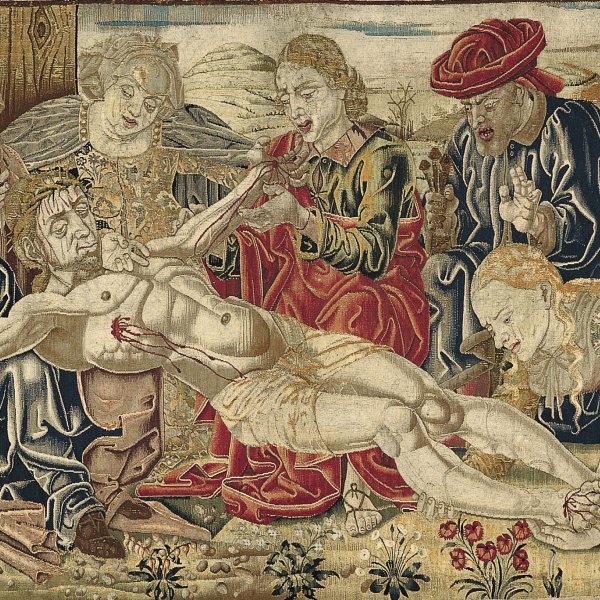Rubinetto di Francia (workshop of). Design By Cosme Tura
Notwithstanding the scarcity of available evidence, Rubinetto (Rubino) di Francia is documented as both a prominent tapissier and the head of an important workshop at the court of Ferrara from 1457 to 1483. Together with the knitter Giovanni Mille di Tournay, Rubinetto executed a series of wardrobe tapestries commissioned in 1473 by Prince Ercole I D'Este for his nuptial chambers, on the occasion of his marriage with Eleanor of Aragon. The preparatory cartoons for the tapestries were execuced by one of the most original and talented artists of the second half of the 15th century: the Ferrarese Cosmè Tura (c. 1430-1495), who, at that time, was employed by the Este court both as a painter and a tapestry designer. At the beginning of the 20th century, the art historian Adolfo Venturi have also attributed to Rubinetto's mastery both an altar panel for the ducal chapel (1469-1470) and three sets of bed hangings produced over a timespan ranging from 1458 to 1470. Rubinetto's sophisticated and complex knitted works constitute an important example of 15th century Italian tapestry making. In comparison to the contemporary industrialised production of the Netherlandish ateliers, a small number of Italian tapestries survived from that period. Thus, the workshops established by the D'Estes as well as their peculiar taste for tapestry epitomise the way in which the noble family had spurred Ferrara to become a refined and innovative art centre that integrated different artistic styles and techniques.
Dominique Lora




